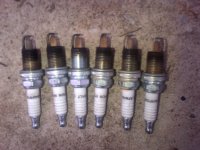Very helpful info, sorry without seeing what you have this is kind of touch and go. With yours being a manual that eliminates interference from the kick down cable. When you rev it up, are you using the gas pedal or pulling the throttle lever with your finger? Check your linkage since it would have been disconnected for the valve replacement. With the engine off, have a helper slowly/fully depress the gas pedal while you check for the full range of motion. Pay close attention to the linkage (transfer bar) that connects the primary circuit to the secondary circuit (or primary venturi and secondary venturi). The transfer bar may have slipped the cotter pin or gotten bent during the repair. For a properly installed Weber, there would be no extra play left in the throttle movement when the pedal is fully depressed (i.e. when your helper has the pedal fully depressed you would not be able to move the throttle additionally with your finger). My next guess is you may have something clogging the internal circuit like a blocked E-tube, secondary jet or even the primary jet which will cause a delay or “bridging” during circuit transition. Or it may be a mal adjusted fuel float. Just keep in mind that you will likely need a rebuild kit if you open the internals of the carb.
Another possibility, although less likely, is you have a leak at the intake manifold gasket. Consider that you have a cast iron block and an aluminum intake. When you replace the intake/exhaust gasket, did you use both pieces of the gasket? I know some folks disagree but the smaller silicone gasket serves a propose.- Just a though, but if you have such a leak you would likely have other problems as well.
When you “re-geared”, did you go higher (towards 2.73) or lower (towards 4.88)?
Lastly, and this is not likely contributing to your current problem, but Webers do not like a OEM style fuel return. There are ways of making this work properly and to your advantage. They were designed to operate on a straight, consistent fuel feed at ~4psi. They also develop problems from the pulsing of the mechanical fuel pump. But that is a discussion for another day if you’re interested.
Keep us posted!

